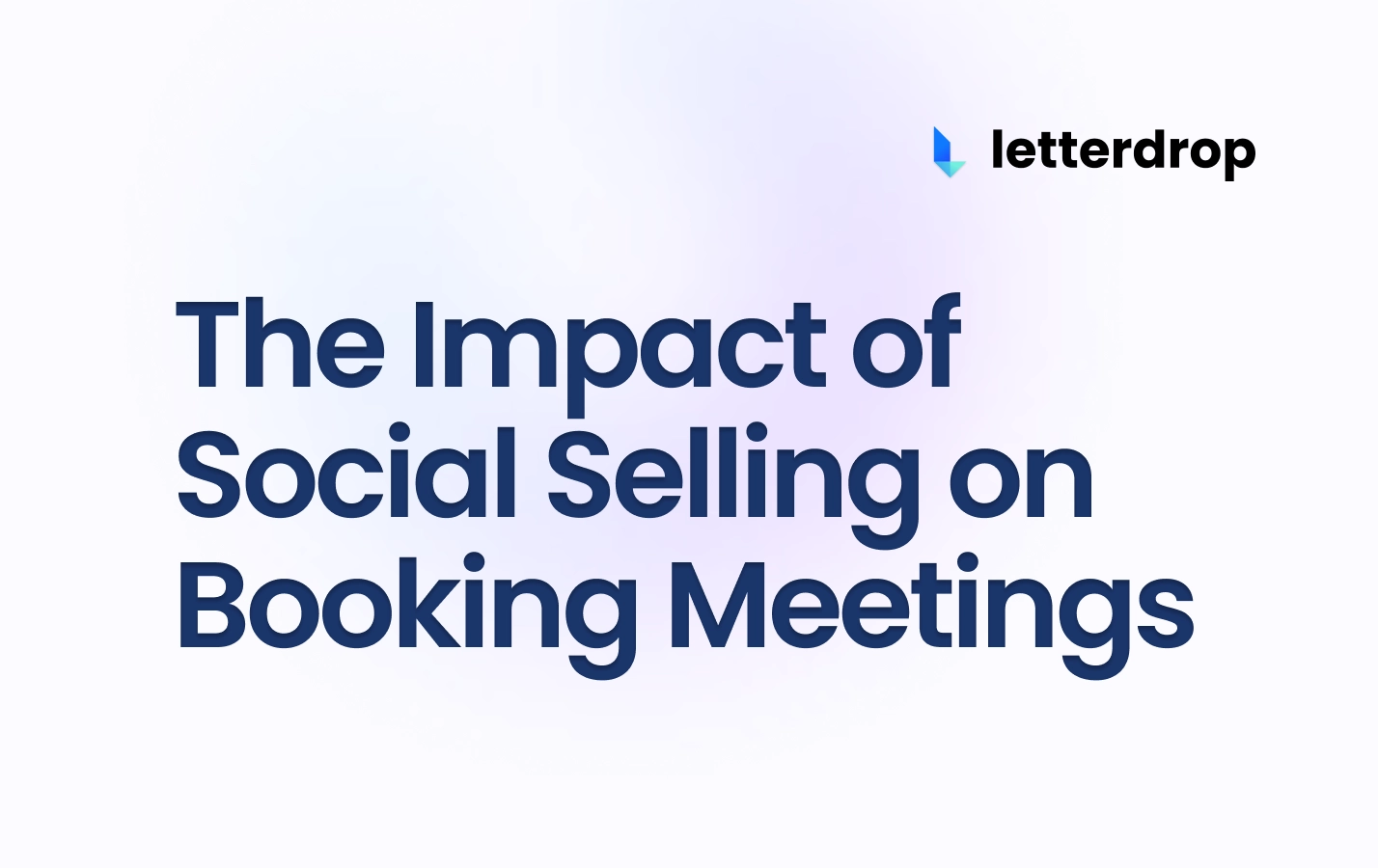A Guide to Identifying Your Content Marketing Goals
You’re a fast-growing company that’s looking for ways to market your product or service. You heard that content marketing is the best long-term strategy to get organic traffic for free. But maybe you should pause and ask yourself what exactly is content marketing and how does it map to your goals.
This guide is here to save you the trouble. Find out what content marketing means for your business and how you can narrow down the content marketing goals for your company. This way, you can make an informed decision as to what you want your content to achieve for your business.
What is Content Marketing?
Content marketing is a marketing strategy where your business creates and distributes educational content across channels like blogs, email newsletters, and social media to attract and retain readers in your target audience. The goal is to eventually turn these readers into customers.
More succinctly, content marketing is writing that serves a business objective. It exists to ultimately make sales easier. Business objectives vary from company to company. What is a priority for you could be of secondary importance to another business. Finding what works for you is crucial to your company’s success. We'll go through the different possible objectives you might want to address with content marketing in this article.
Why is Content Marketing Important?
Here are the primary ways in which content marketing creates value for your business:
1. Generate new business
Producing content lets buyers know that you exist. You can use your content to attract new customers and teach them about your product and services.
2. Add value through education
Buyers today research how to do their jobs better and the tools they could be using. Buyers today make smarter purchasing decisions based on thorough research and comparisons of products and services. Studies reveal that 81% of buyers do online research before buying a product. By being the source of educational material to help solve their problems, you earn their trust. This puts you in a great position to sell to them when they're ready.
3. Share your vision for your industry
You can win over your audience by telling a story about the future and what your business is trying to achieve. Get buy-in from customers and partner businesses. Have your audience share your message.
4. Build a marketing moat
Through content, you gain an edge over your competition. It takes time to build a brand, an audience, and awareness around your product. Given the compounding nature of the content on traffic, there is an advantage to getting there first. Your competitors can copy your features but it's a lot harder to steal your audience.
The Three Different Types of Content Marketing Goals
You can leverage content marketing to achieve specific goals. Let’s talk about the 3 types of goals you can try to achieve with content.
Goal 1: SEO (Search Engine Optimization)
How does content help with SEO?
Content helps your site get discovered through Google and other search engines. The biggest component in SEO (search engine optimization) is producing relevant content that answers search queries. By creating a ton of useful content around a specific topic that your audience will actually click on and read, Google will increase your ranking in search results.
What will SEO do for your business?
SEO lets you acquire customers organically for free through search in the long run. You build an organic growth engine that generates compounding traffic for their site over time. It also lowers the cost of your paid acquisition through Google Search Ads. If your business needs to reduce its customer acquisition cost (CAC), SEO is definitely one of the most promising channels to consider.
When should you invest in SEO?
If your goal is to drop your customer acquisition cost (CAC) and organically bring in more customers over time, you need to invest in SEO.
Before you consider using SEO for your content marketing, make sure that you have the following prerequisites in order:
- A well-defined audience.
- Your marketing team needs to have a good understanding of why users search for products and services in your niche industry (their search intent).
- A grasp over conversion funnels (how to convert potential customers into paying customers) and their journey from searching for a product/service to making a purchase.
Don't expect to see any noticeable uptick in traffic for at least four to six months after implementing and executing perfectly on an SEO strategy. However, in the 1-2 year time frame, you could possibly get most of your traffic through SEO. The upside is that the results are permanent and consistent. Moreover, your results get better as time progresses. So, the efforts of your SEO strategy after 12 months are going to be far better than what it was at the four-month mark.
Businesses spend around 6 to 12% of their revenue on marketing. Make sure you're spending that wisely on something that will create a lasting impact instead of a channel that's temporary like ads.
How you should implement SEO
SEO is a long-term marketing tactic and that’s the reason businesses need to plan ahead before getting into it. If you’re not thinking of a long-term SEO strategy where you’re ready to set aside a budget for at least 6 to 12 months, you're better off looking into other channels.
In order to get started on your SEO journey and implement SEO, you need to invest in the following processes:
- Keyword and competitive research
- Consistent and high frequency of posts for high ROI keywords
- An internal site link structure
- Backlink building
- SEO-optimized content
- Performant web pages
We have multiple guides to improving your SEO content creation process - how to create content maps, use content pillars, start from blog post templates, and much more. Check out the Letterdrop blog for more on this topic.
Goal 2: Thought Leadership
What is the goal of thought leadership?
Thought leadership is a way for business leaders to showcase their expertise in their market and build a brand. You share your take on best practices, the evolution of the industry and the future. It's designed to get readers to think critically and seek advice from you with their problems.
According to a recent survey, 60% of decision-makers were influenced into buying a product or service based only on thought leadership content they consumed.
What can thought leadership achieve for your business?
This form of marketing also allows individuals at companies to improve their authority and influence in the eyes of their audience. It works better when coming from a C-suite exec or Head of Marketing than from the company account. For example, at Letterdrop, our CEO recaps all our content in his own voice. Thought leadership is largely designed for distribution on social media or via email newsletters. It's content that could potentially get shared a lot in your industry and go viral. In the process of it getting shared, you also build backlinks to your site that help improve your site's ranking in Google's eyes.
When should you use thought leadership?
Thought leadership helps you build your brand over time and can attract new customers immediately. In some ways, it behaves the same as PR.
The downside to thought leadership content is that since it's not motivated by keyword research, it may not get sustained organic traffic over time. Your results might die out after a day or two.
How should you implement thought leadership in your content strategy?
Source ideas from your company's leaders, product managers, salespeople, and customer support. People who interact with customers regularly and have an opinion on what kind of information they want to know. Get leadership in your company to outline macro trends and their "earned secrets" on the industry from speaking with other executives. Thought leadership has to be original and make people think. Unlike SEO content, it doesn't exist to answer a question someone is searching for. Instead, provide a framework for how to think about a problem or add commentary on evolving trends in an industry.
Thought leadership is less likely to be discovered via search. You need to distribute it via Twitter, LinkedIn, email newsletters, Facebook Groups, Slack and Discord communities, etc. Give it a chance to go viral and be shared amongst colleagues and influencers in your industry. Make sure to engage with people who like, react, or comment on your pieces to maximize the reaction of your content.
Goal 3: Sales Enablement through Sales Collateral
What is the goal of sales enablement?
Sales enablement ensures that sales executives have the content, training, and guidance necessary to close customers. Sales collateral helps Sales Development Representatives (SDRs) and Account Executives (AEs) increase their close rates with persuasive and educational content. In this case, content is created with the goal of helping sales teams answer questions from prospective customers and win them over.
What will sales collateral achieve for your business?
Sales collateral addresses common sales objections your leads might have. This helps sales teams by:
- They come as more professional and prepared with sales material handy
- Can immediately handle objections with detailed content instead of just off-the-cuff answers
- Can use sales collateral in follow-up emails, drip campaigns, etc.
When should your goal with content be sales enablement?
Sales enablement doesn’t drive new leads. It basically helps sales representatives engage existing leads and turn them into paying customers. So, if the goal of your content marketing efforts is marketing and bringing in new customers, your goal should be SEO or thought leadership. If you want to improve your sales funnel, invest in sales collateral.
How you should implement sales enablement into your content marketing strategy
To start creating effective sales collateral, you need cooperation from both your marketing and sales teams.
- Sales heads need to get their team to collect objections.
- These need to be shared with marketing to be prioritized.
- Marketing has to create relevant content and inform sales when it's published.
- SDRs and AEs need to actually utilize the content created to accelerate sales conversations.
For a more detailed guide on how to think about sales enablement via content, check out our guide on creating sales collateral.
Different Types of Content Have Different Strengths and Weaknesses
The key takeaway from the above is that whatever content marketing strategy you have planned for your business, to take full advantage of it, the content must be created with a single goal in mind.
A good content strategy deploys a balanced portfolio of content with different goals. This way you can use content throughout your business to acquire new customers and engage existing prospects.
 |
Looking at the above table, you’ll notice that your search engine optimization strategy will give you what both thought leadership and sales enablement cannot, which is compounding traffic. And although your SEO strategy won't help you build a brand or an audience as quickly, your thought leadership content can.
Conclusion
Don't invest in content marketing blindly. Understand whether your goal is SEO, thought leadership, or sales enablement. Tailor your content accordingly and make sure you diversify your types of content to create a portfolio that covers different goals.
We understand the various nuances that come with content marketing at Letterdrop and have built a platform to help you successfully execute your content marketing operations regardless of your goal.
How Letterdrop helps create SEO content
Our SEO optimizer can tell you if your blog posts are optimized for Google. We provide performant blog hosting so that Google indexes your content. We give you keyword research tools to decide what to write about based on search data.
How Letterdrop helps create thought leadership content
If you're creating thought leadership content, we have one-click distribution to social channels. Share your blog post as a newsletter, to LinkedIn, Twitter thread, Facebook Groups, Instagram, and Medium with a single click. We can also connect you with editors to proofread your work and improve your storytelling.
How Letterdrop helps create thought sales collateral
Letterdrop lets you collect content ideas from anyone on your team easily. SDRs and AEs can simply type /idea in Slack and submit ideas after a sales call or shoot an email to drop an idea in your content ideas backlog.
We're excited to help you think about your content goals. Leave a comment or reach out if you need help!
Subscribe to newsletter
No-BS growth strategies and content marketing tactics in your inbox twice a month.
Related Reading
Some other posts you might find helpful
















